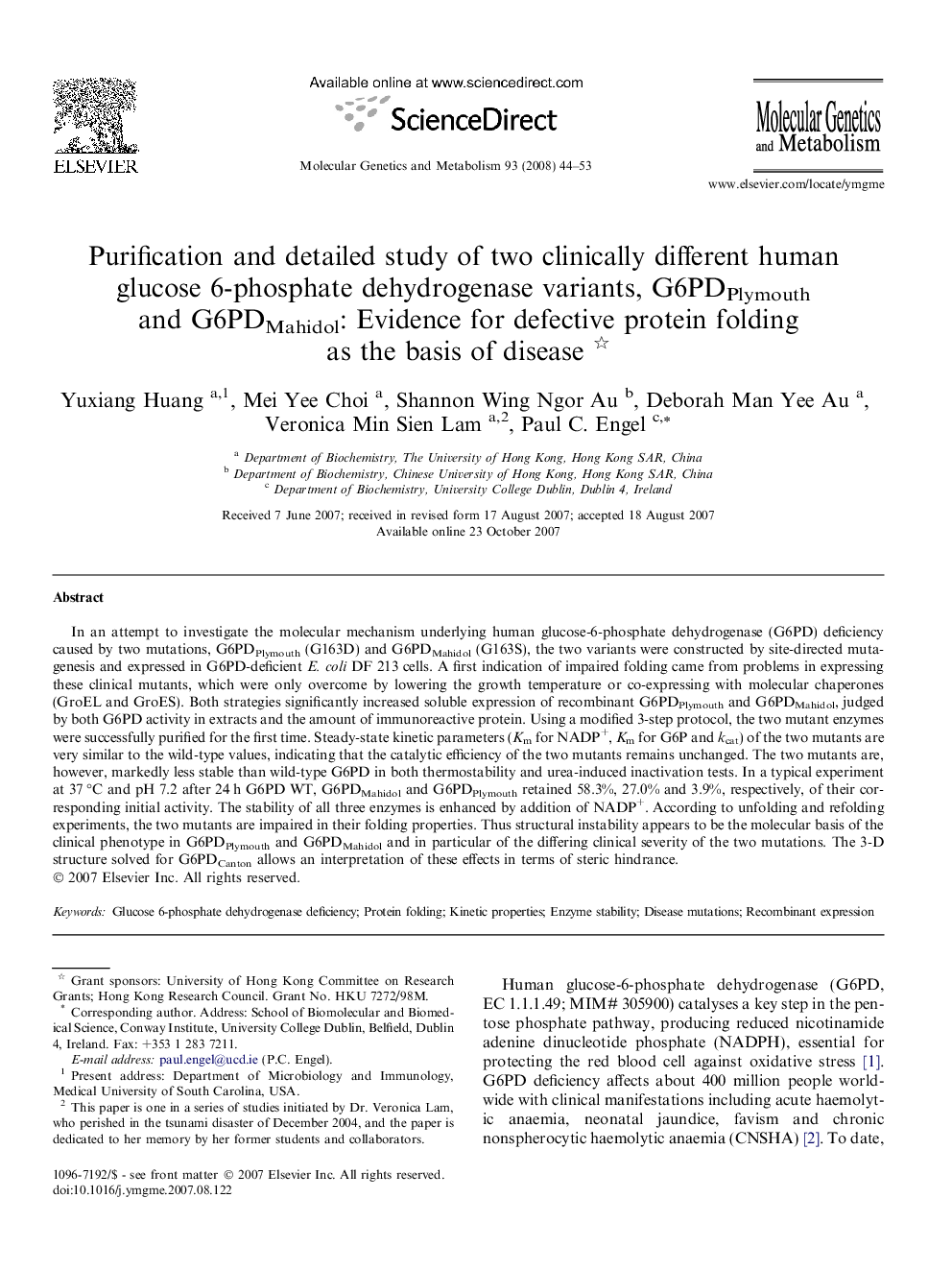| کد مقاله | کد نشریه | سال انتشار | مقاله انگلیسی | نسخه تمام متن |
|---|---|---|---|---|
| 2000030 | 1065894 | 2008 | 10 صفحه PDF | دانلود رایگان |

In an attempt to investigate the molecular mechanism underlying human glucose-6-phosphate dehydrogenase (G6PD) deficiency caused by two mutations, G6PDPlymouth (G163D) and G6PDMahidol (G163S), the two variants were constructed by site-directed mutagenesis and expressed in G6PD-deficient E. coli DF 213 cells. A first indication of impaired folding came from problems in expressing these clinical mutants, which were only overcome by lowering the growth temperature or co-expressing with molecular chaperones (GroEL and GroES). Both strategies significantly increased soluble expression of recombinant G6PDPlymouth and G6PDMahidol, judged by both G6PD activity in extracts and the amount of immunoreactive protein. Using a modified 3-step protocol, the two mutant enzymes were successfully purified for the first time. Steady-state kinetic parameters (Km for NADP+, Km for G6P and kcat) of the two mutants are very similar to the wild-type values, indicating that the catalytic efficiency of the two mutants remains unchanged. The two mutants are, however, markedly less stable than wild-type G6PD in both thermostability and urea-induced inactivation tests. In a typical experiment at 37 °C and pH 7.2 after 24 h G6PD WT, G6PDMahidol and G6PDPlymouth retained 58.3%, 27.0% and 3.9%, respectively, of their corresponding initial activity. The stability of all three enzymes is enhanced by addition of NADP+. According to unfolding and refolding experiments, the two mutants are impaired in their folding properties. Thus structural instability appears to be the molecular basis of the clinical phenotype in G6PDPlymouth and G6PDMahidol and in particular of the differing clinical severity of the two mutations. The 3-D structure solved for G6PDCanton allows an interpretation of these effects in terms of steric hindrance.
Journal: Molecular Genetics and Metabolism - Volume 93, Issue 1, January 2008, Pages 44–53